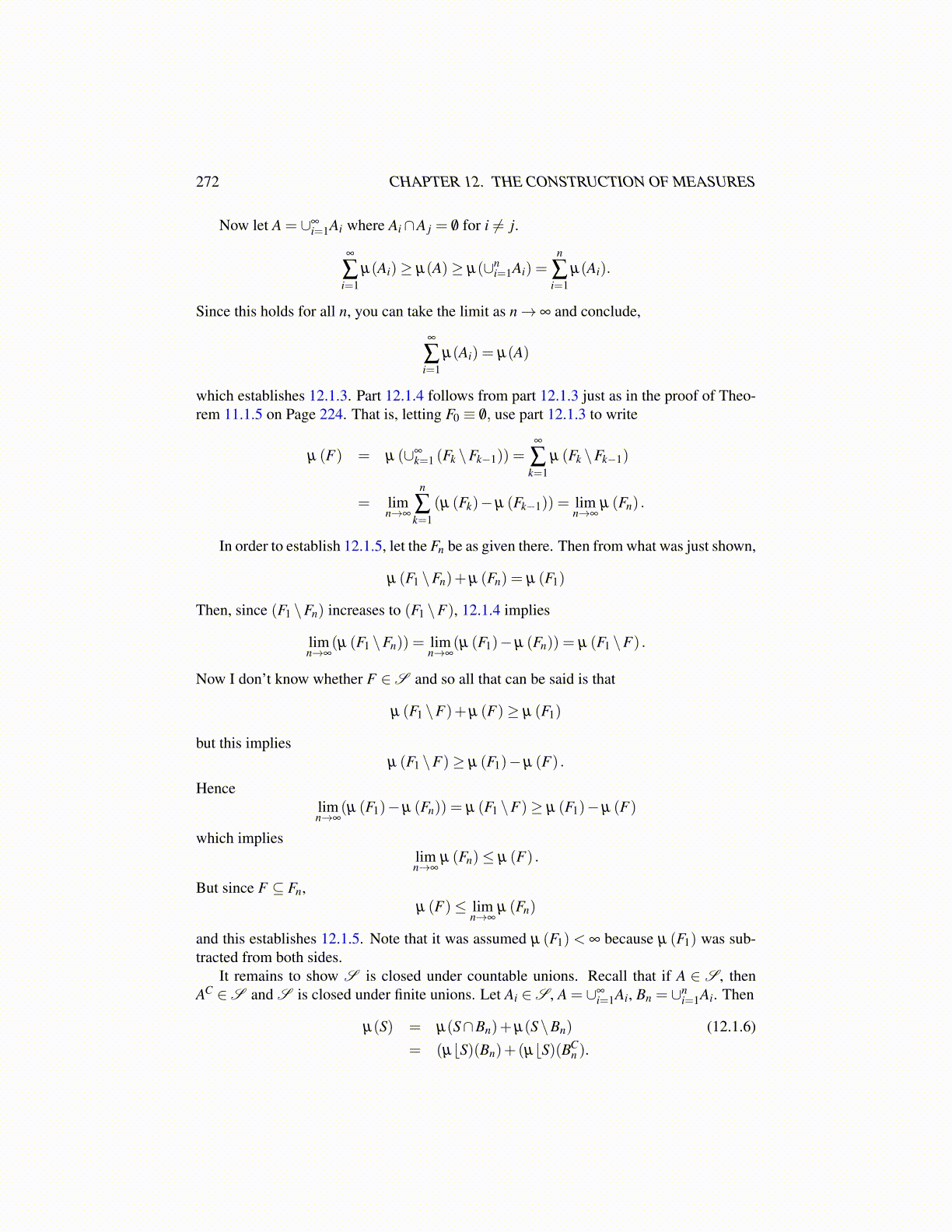
272 CHAPTER 12. THE CONSTRUCTION OF MEASURES
Now let A = ∪∞i=1Ai where Ai∩A j = /0 for i ̸= j.
∞
∑i=1
µ(Ai)≥ µ(A)≥ µ(∪ni=1Ai) =
n
∑i=1
µ(Ai).
Since this holds for all n, you can take the limit as n→ ∞ and conclude,
∞
∑i=1
µ(Ai) = µ(A)
which establishes 12.1.3. Part 12.1.4 follows from part 12.1.3 just as in the proof of Theo-rem 11.1.5 on Page 224. That is, letting F0 ≡ /0, use part 12.1.3 to write
µ (F) = µ (∪∞k=1 (Fk \Fk−1)) =
∞
∑k=1
µ (Fk \Fk−1)
= limn→∞
n
∑k=1
(µ (Fk)−µ (Fk−1)) = limn→∞
µ (Fn) .
In order to establish 12.1.5, let the Fn be as given there. Then from what was just shown,
µ (F1 \Fn)+µ (Fn) = µ (F1)
Then, since (F1 \Fn) increases to (F1 \F), 12.1.4 implies
limn→∞
(µ (F1 \Fn)) = limn→∞
(µ (F1)−µ (Fn)) = µ (F1 \F) .
Now I don’t know whether F ∈S and so all that can be said is that
µ (F1 \F)+µ (F)≥ µ (F1)
but this impliesµ (F1 \F)≥ µ (F1)−µ (F) .
Hencelimn→∞
(µ (F1)−µ (Fn)) = µ (F1 \F)≥ µ (F1)−µ (F)
which implieslimn→∞
µ (Fn)≤ µ (F) .
But since F ⊆ Fn,µ (F)≤ lim
n→∞µ (Fn)
and this establishes 12.1.5. Note that it was assumed µ (F1) < ∞ because µ (F1) was sub-tracted from both sides.
It remains to show S is closed under countable unions. Recall that if A ∈ S , thenAC ∈S and S is closed under finite unions. Let Ai ∈S , A = ∪∞
i=1Ai, Bn = ∪ni=1Ai. Then
µ(S) = µ(S∩Bn)+µ(S\Bn) (12.1.6)= (µ⌊S)(Bn)+(µ⌊S)(BC
n ).